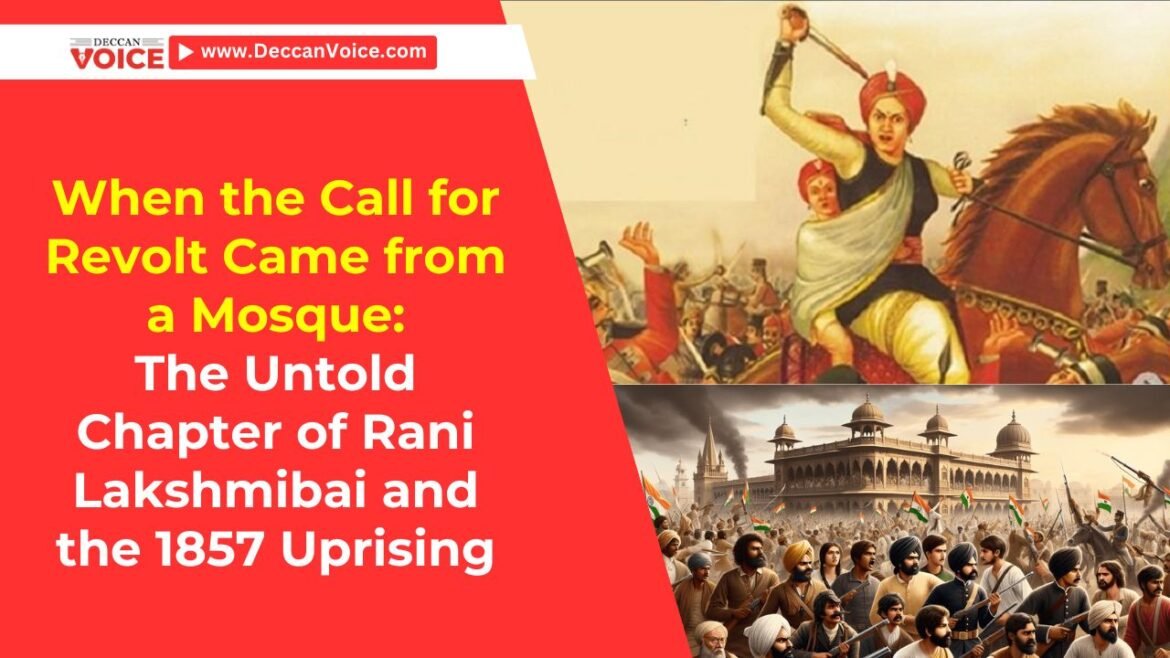Table of Contents
India’s first war of independence in 1857 was marked by bravery, sacrifice, and above all, unity. But many powerful stories of this movement have either been forgotten or deliberately omitted from mainstream history. One such little-known but significant episode occurred on June 6, 1857, when Rani Lakshmibai of Jhansi reportedly had a call for revolt announced from a mosque, leading to a surge of Muslim soldiers joining her forces.
The Call for Rebellion from the Mosque
According to “History of 1857” by historian K.K. Kannan, Rani Lakshmibai, accompanied by her troops, marched towards the cantonment area of Jhansi on June 6. At the same time, a local maulana made an announcement from the mosque during prayers, urging people to rise against the British regime. The mosque, traditionally a place of worship, became a rallying point for resistance—mobilizing not just soldiers, but common citizens as well.
Muslim Soldiers in Rani Lakshmibai’s Army
Rani Lakshmibai’s army was not just a band of local warriors—it was a symbol of India’s unity across religions. She was joined by numerous Muslim soldiers, particularly Pathan warriors, known for their fearlessness. Among the most prominent was Ghulam Ghaus Khan, a brave artillery commander who remained loyal to the Rani till the very end and was martyred in battle. His contribution is a shining example of interfaith solidarity during India’s freedom struggle.
First Clash With the British
As Rani’s forces advanced, they encountered British officer Captain Dunlop and his associate A. Sine Taylor, near a local post office. In a fierce battle, both were killed by the freedom fighters. This marked a bold statement that the British Empire was no longer invincible, especially when faced with a united Indian front.
Why Has This Chapter Been Erased?
It is worth asking why such a powerful and inspirational event remains absent from most history textbooks. The reason, many believe, is that it challenges the modern-day narrative of religious divide. The 1857 revolt was a joint Hindu-Muslim effort, with temples and mosques serving as centers of rebellion. Such unity doesn’t suit the agenda of those who try to divide society along religious lines.
Conclusion
The revolt of 1857, especially the events of June 6, stand as a testament to India’s inherent unity. Rani Lakshmibai was not just a Hindu queen—she was a national symbol of resistance, supported by brave Muslim warriors like Ghulam Ghaus Khan. Their shared fight against colonialism is a reminder that India’s true strength lies in its unity, not in division.
“History is not just what is written in books—it’s what we feel in our hearts. And this forgotten chapter reminds us that the foundation of India’s independence was built on unity and shared sacrifice.”
Let us reclaim and honor this forgotten history—for the truth, once told, has the power to unite us again.



